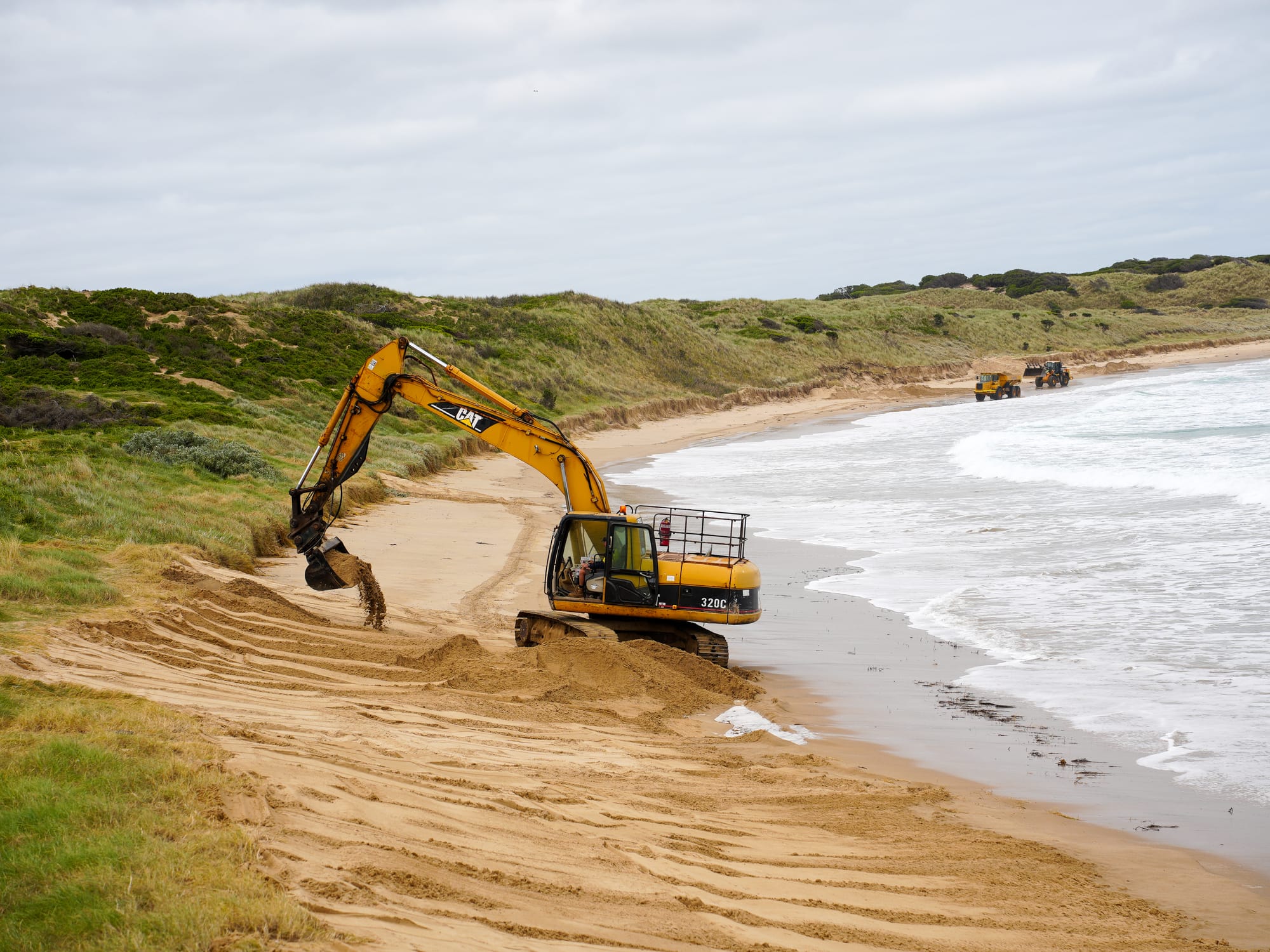Trying to turn tide on erosion
Summerland Beach to undergo sand nourishment works.

Summerland Beach will undergo sand nourishment works to combat the effects of erosion and climate change on the sand dunes.
Phillip Island Nature Parks said the work is designed to safeguard the future access of penguins to their breeding grounds on the Penguin Parade.
Nature Parks has stepped out a coastal process study for the beach, detailing short, medium and long-term initiatives to help build the resilience and sustainability of the coastline.
The study, funded by a $180,000 grant from the Department of Energy, Environment and Climate Action (DEECA), details changeable pathways for the monitoring and management of the beach, including back-passing sand from the eastern side of Summerland Beach to the viewing stands and revegetation of the dunes.
Penguin Scientist at Phillip Island Nature Parks, Prof Andre Chiaradia said the erosion is particularly concerning between the concrete stands, which is the premium viewing position for most visitors.
"Cross-shore erosion modelling shows that, based on projected rising sea levels, erosion at Summerland Beach is expected to increase the current setback of 19 metres to 31 metres by 2040, and 66 metres by 2100," Prof Chiaradia said.
"The erosion will get worse over time, so we need to act now to protect Summerland Beach and our treasured Penguin Parade."
The Nature Parks is now undertaking the beach nourishment, which involves adding large quantities of sand to counter erosion due to the impact of rising sea levels and storms on sandy beaches.

Prof Chiaradia said the Nature Parks had also partnered with the DEECA Victorian Coastal Monitoring Program to conduct regular drone flights to monitor coastal erosion at the beach.
"The team conducted several flights to assess beach conditions in preparation for the upcoming sand nourishment intervention, and it is hoped this ongoing monitoring, coupled with our adaptative pathway, will guide future interventions and management of the entire Phillip Island coastline, which is under pressure from rising sea levels," Prof Chiaradia said.
"Any interventions will balance the effects of climate change and rising sea levels alongside the care for the Penguin Parade colony, penguin habitat, patron experience and the need to maintain the natural characteristics of the beach.
"Research shows the sea level will increase over time and back-passing will be required more regularly.
"At some point, we will need to look towards alternatives, which may include replacing the concrete viewing stands with portable alternatives that can be relocated over time as the shoreline fluctuates, or potentially moving the viewing stands closer to land.
"The adaptation planning pathway for the Penguin Parade viewing stand infrastructure will be vital to the ongoing success of this iconic attraction, which has become a treasured piece of Victoria," he said.
Phillip Island is home to the largest little penguin colony in the world, and each year thousands of people visit — making it one of the top nature-based attractions in Australia.
Latest data shows visitation to the Penguin Parade has returned to pre-Covid levels, with 709,527 people visiting the Penguin Parade in 2023-24, up from 545,148 in 2022-23.






